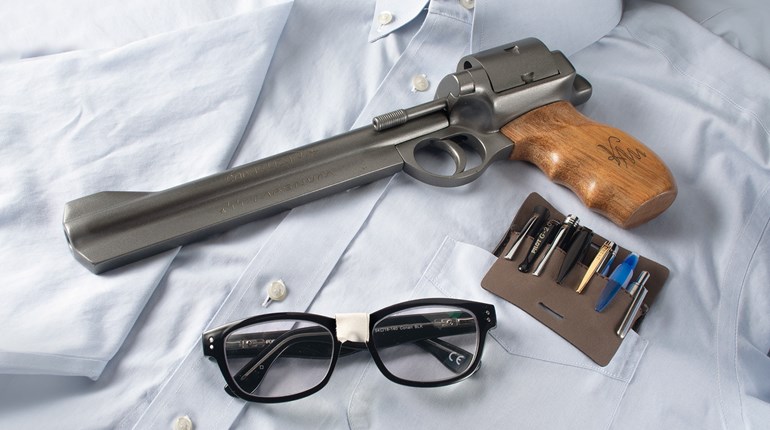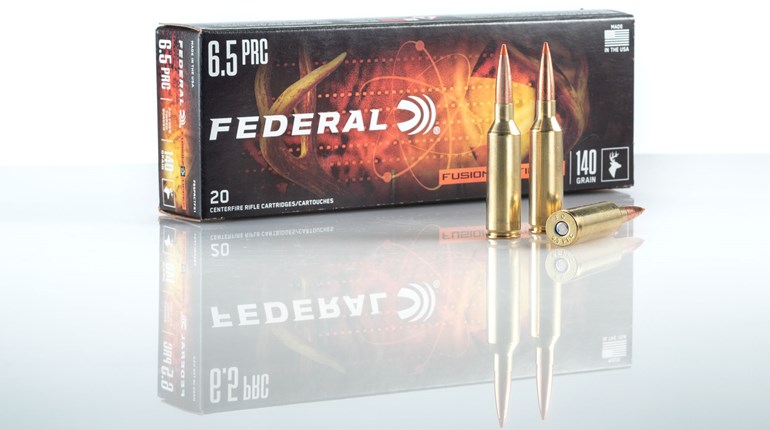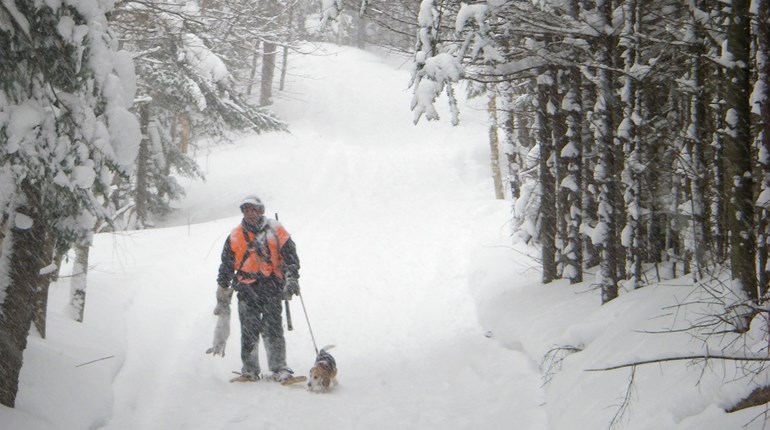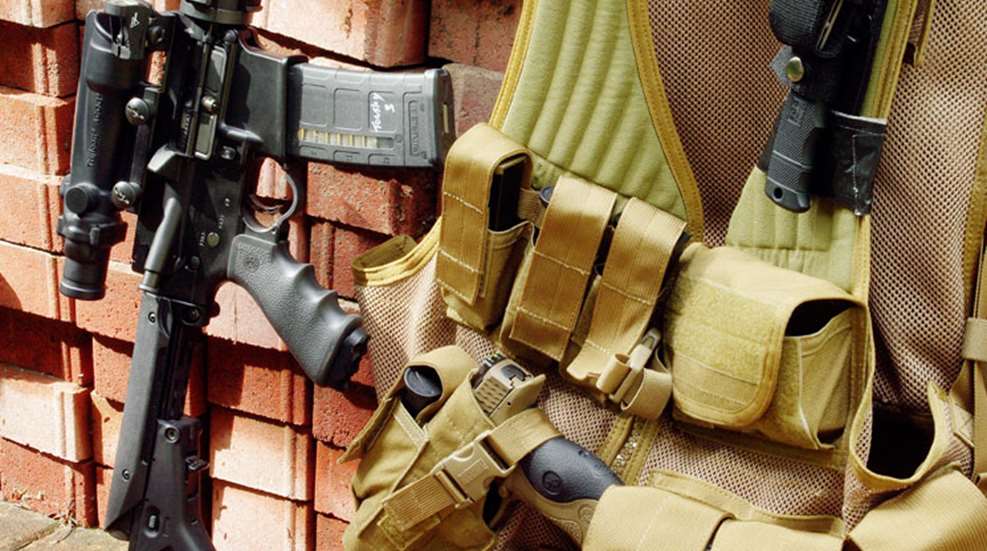
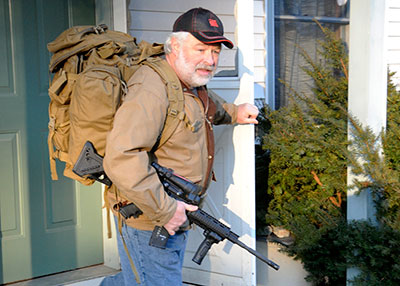
Everywhere I travel in this great country, I hear—from a diverse range of people—the pervading fear that something bad is coming, the nagging idea that we are moving quickly into bad and violent times. Whether or not these fears are sound (and I certainly hope it’s all wrong), it is always wise to prepare for the worst. After all, it’s better to be ready for a catastrophe that never comes than to be caught without the means to survive a disaster.
One serious consideration is your bug-out gear. You may not have the option to stay at home, and what you bring with you when you leave can have a profound impact on your ability to survive. It’s important to have a bug-out bag ready with food, water and survival gear, but the single most-important aspect is the ability to protect yourself and your family (and all that food and survival gear) from the multitude of threats existing in a prolonged period of unrest. In the end, protection comes down to the guns with which you bug out.
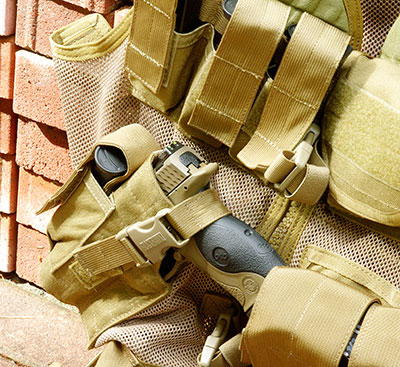
Handgun
I recently made some changes here to my bug-out pistol choice. While I own and shoot just about every type of handgun, I am a hardcore 1911 disciple. For a long time, 1911s resided in all my bug-out gear, and there is still one in my main bug-out bag. But for my primary bug-out handgun, I switched it up. Why? Simple: magazine capacity. You can only carry so many magazines when you bug out, and the 1911 magazines I use hold eight cartridges. Therefore, I decided to look at double-stack handguns. Considering pricing and availability, that more or less meant exploring the world of striker-fired polymer handguns. There are a wide range of pistols in this category, and I have experience with most of them. That said, I don’t think you can go wrong with any brand-name handgun.
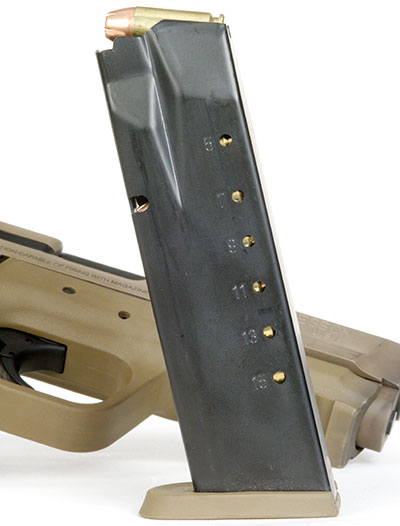
Cartridge selection, though, is another consideration. My stubby fingers don’t play well with most double stack .45 ACP handguns as the grip is too big, and I don’t care what the Internet is saying—I don’t trust the 9 mm. I have experience shooting things with handgun rounds, and I have seen a lot of big game shot with various pistol cartridges. Several times, I’ve seen a reasonably well-placed shot from a 9 mm fail horribly on hogs, deer and black bears. Moreover, I know folks who have used pistols in battle during multiple engagements, and they universally tell me the 9 mm fails on two-legged critters as well. While there is a strong argument for the 9 mm because of ammo availability, I’ll pass. Call me old-fashioned, but I want a cartridge that starts with a four.
I have seen the .40 S&W perform well on hogs and even on deer. While I think it’s too light for hunting, seeing it work for that purpose has instilled more confidence in that cartridge than I have in the 9 mm. While most of the better striker-fired handguns will work well here, I swapped out the 1911 in my bug-out vest for a Smith & Wesson M&P40 VTAC handgun. This pistol has a sighting system designed by former SOF operator Kyle Lamb, which combines fiber-optic and tritium night sights. I also installed a Crimson Trace Lasergrip on this .40 S&W.

As I said, the primary reason for switching to this pistol is its magazine capacity—15 cartridges in the M&P40 versus eight in the 1911. I have almost doubled the ammunition in any given magazine over the 1911, while still using an effective cartridge. I’ll give up two rounds of capacity (compared to many 9 mm handguns) for terminal performance that means I probably won’t need them. The .40 S&W is a common law enforcement chambering, so ammo should be readily available.
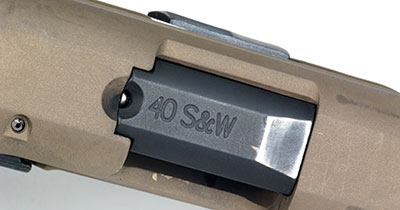
Any good defensive load will work, but always make sure it runs well in your gun. I use Federal 180-grain HST JHP, which is affordable for quality defensive ammunition and has a good track record with both law enforcement and civilians. My son-in-law is a federal agent, and this is the same ammo issued to his agency. He trusts it to defend his life and the life of my daughter, which is all the proof I need.

Long Guns
A longarm will be your primary firearm for defense and for foraging, so a lot of thought must go into your choice. I think we can eliminate the shotgun rather quickly.
Shotguns have a very limited range, even with slugs. While a specialty shotgun with a scope and rifled barrel using sabot slugs is capable of accuracy to 150 yards or farther, a smoothbore “tactical” shotgun with Foster-style slugs is reliable only to about 75 yards, at best. Furthermore, the capacity of a shotgun is very low—five to eight shells for most tactical models—and they are extremely slow to reload. Finally, the ammo is heavy, bulky and difficult to transport. Twenty Federal TruBall slugs weigh 2 pounds, while 20 .223 Rem. cartridges check in at half a pound. The volume of space the ammo takes up is also hugely different, with the shotgun fodder requiring many times more cubic inches than that for the rifle.
There is a lot of misinformation out there about defensive shotguns. The common belief that you can’t miss with a shotgun and that it takes little or no skill to operate is a complete myth. Running a shotgun effectively takes a skill set close in the level of difficulty to running a rifle effectively. If you are in a fight where you must reload, the needed skills to recharge a shotgun are more advanced than what it takes to be effective with a tactical rifle.
A magazine-fed, semi-automatic rifle with a carbine-length barrel (16 to 18 inches) is by far the best choice for a bug-out long gun. It can do anything a shotgun can do, plus quite a bit more. In the hands of a trained individual, it is quite effective for close-quarters, yet it can reach out hundreds of yards with precision. It is much faster to reload, has a significantly larger magazine capacity and uses ammunition that is lighter and smaller. It is as effective as a shotgun up close and exponentially more effective at distance.
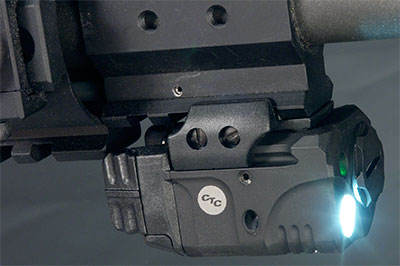
The rifle you choose should be powerful enough to fight with and have a ready supply of ammo, so it should be chambered for a popular cartridge. That eliminates rounds like the .300 AAC Blackout or the 6.8 Rem. SPC. They might be good chamberings, but how easy is it going to be to resupply ammo? It is much smarter to pick a cartridge that is popular with civilians, law enforcement and the military. While 7.62x39 mm and 5.45x39 mm are reasonably easy to find cartridges among civilians, few law enforcement agencies and fewer American military units have access to rifles in those chamberings. That leaves the .308 Win. or the .223 Rem.
Of the two, the .223 Rem. is probably the more common, particularly if there are military forces in the area. It’s a smaller cartridge, easier to transport in quantity than the .308 Win. and magazines and rifles in .223 Rem. are also smaller and lighter. While I generally tend to gravitate to larger calibers, in this case, when you weigh all the factors, the .223 Rem./5.56 NATO emerges as the best choice, particularly when using loads sporting modern bullet designs.
With high-quality bullets, the .223 Rem. is more than a viable defensive round—it will also serve for foraging. While I don’t normally recommend it for big-game hunting, the rules are different when survival is the goal. Certainly, .308 Win. is a better option for hunting big game, but the .223 Rem. will suffice.
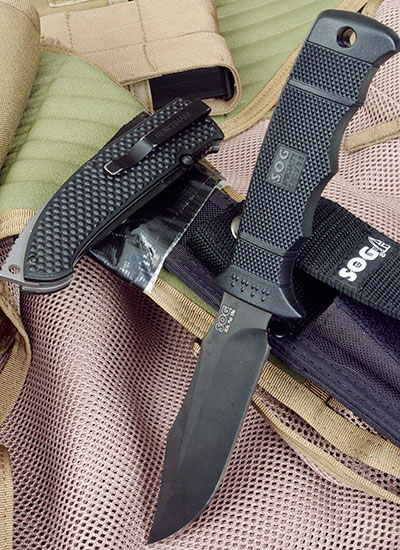
Therefore, I think the clear choice for a bug-out rifle is an AR-15-style option. It’s important for the rifle to be able to shoot both .223 Rem. and 5.56 NATO ammo, so it must have a 5.56 NATO (or .223 Wylde) chamber. It must also use AR-15 magazines, as these are very common and easier to find than other styles. I am a strong believer in optical sights, but the gun should have a set of backup iron sights as well. A light carbine, easy to transport, is best for a bug-out scenario, as you will almost certainly be on the move.
My bug out rifle is an M4-style carbine I built from parts ordered from Brownells. It has a 3X Trijicon ACOG as the primary sight. I also have a red-dot sight on an offset mount for close-in needs. I carry a set of pre-zeroed iron sights in my bag should everything fail. The gun is equipped with a Crimson Trace CMR-204 Rail Master Pro Universal Green Laser Sight & Tactical Light. This gives me a laser visible in daylight as well as in the dark and a bright, gun-mounted flashlight. I am a strong believer in laser sights on all defensive rifles and handguns. They allow you to focus on the target, they work well in poor light and they add a “compliance” factor that will often eliminate the need to shoot by making a threat cognizant of the peril into which he has put himself. Make no mistake: not having to shoot is always better.
Depending on availability, I keep my magazines loaded with Federal Premium 55-grain Nosler Ballistic Tip or Hornady 55-grain TAP ammo. Both are good choices for defensive use, and they shoot to the same point of impact from my gun. I also load at least one magazine with Barnes VOR-TX ammo with 55-grain TSX bullets. This is a better choice in bullet for foraging big game, and will still work well in a fight.
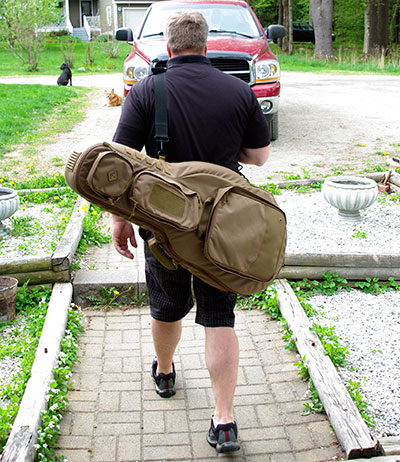
Carrying it All
How to keep multiple firearms ready to go is another concern. The key is to have it all in a package you can grab in a hurry. After experimenting with several systems, I finally settled on a Blackhawk Omega Vest, Cross Draw/Pistol Mag model. One big attraction is the company offers this vest with a holster set up for lefties, so even we southpaws can have a solid option.
In the vest, I have the loaded M&P40 and four extra loaded magazines in the pistol-mag pouches. I also have two more magazines in the radio pouch, along with a high-quality flashlight and spare batteries for the light and lasers.
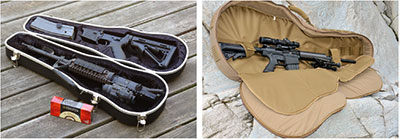
The three rifle-magazine pouches have room for two magazines each, so I have six loaded Brownells 30-round AR-15 magazines, in addition to the two with the rifle. Finally, I have an SOG SEAL Pup knife attached to the vest with a Benchmade folding knife in the dual pouch. A knife is second only to your firearms for a survival tool, and having two gives me some redundancy. The knives are not for fighting—if it comes to that, you’ve messed up somewhere—but they are vital for a million other chores, from processing game to peeling potatoes.
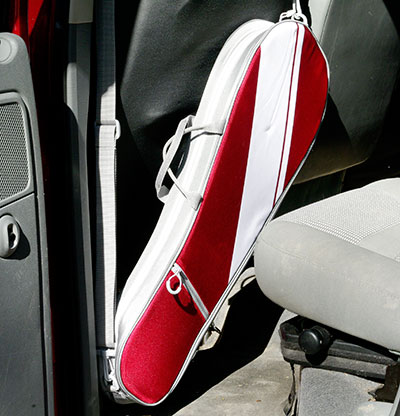
This vest hangs by a door, ready to go, so all I need is to grab it and the rifle bag on the run. While the vest can attract unwanted attention if it’s worn in an urban area, it has everything I need in one place. I can toss it on the back seat, or if the circumstances warrant, wear it. The rifle, two magazines and backup sights are in a diversion bag that looks like a case for a musical instrument. That helps to keep it out of sight unless it’s needed.
When I can wear it without attracting unwanted attention, I have a two-point Vero Vellini tactical sling on the carbine. I have never liked single-point slings, but when I was writing my novel, “The 14th Reinstated,” I got lazy and gave one to the protagonist. I had an Army SOF operator read the manuscript to make sure the fight scenes were accurate. The only change he suggested was a two-point sling. His reasons were many and all made tactical sense, but he made the point best when he said, “none of my guys would ever use a single-point sling in combat.” Good advice from a guy who has been there, got the T-shirt and then wore it out.
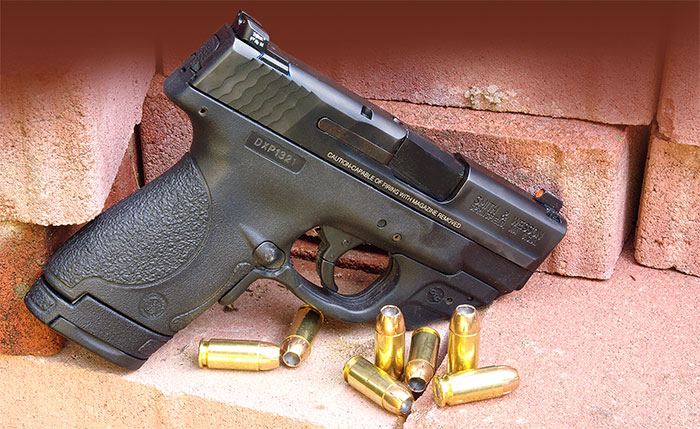
Backup Your Bug-Out
I think it’s a good idea to have a backup gun of some sort—one that conceals easily on your person, in your vehicle or in your gear—in case something bad were to happen to your primary firearms. While I love my Smith & Wesson J-Frame in .357 Mag. for its “hideability” and its power, a gun that uses the ammo you already are carrying makes sense. My hideout gun is a Smith & Wesson M&P Shield in .40 S&W. The sights are Trijicon HD Night sights and I have a Crimson Trace Laserguard mounted on the gun. (Are you seeing a pattern here yet?)
It’s my personal carry gun much of the time, but when I am not carrying it, I keep it with the bug-out gear, along with the holster and spare mags. Of course, that’s just so it comes with me—once we are bugging out, I’ll hide it in a place I have no intention of disclosing.












